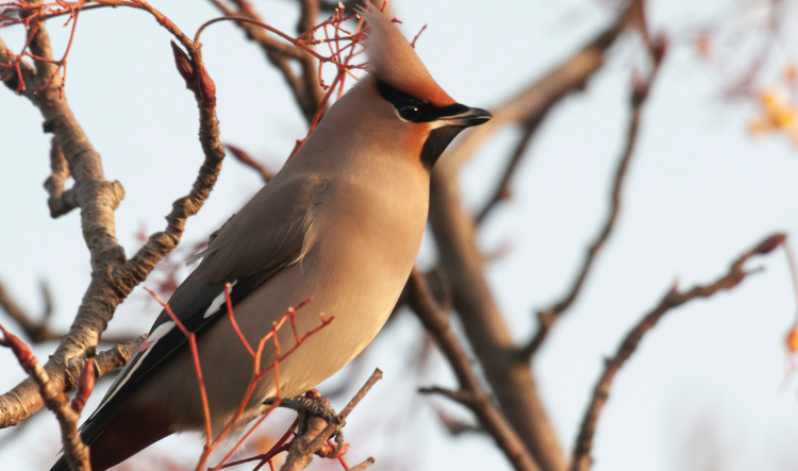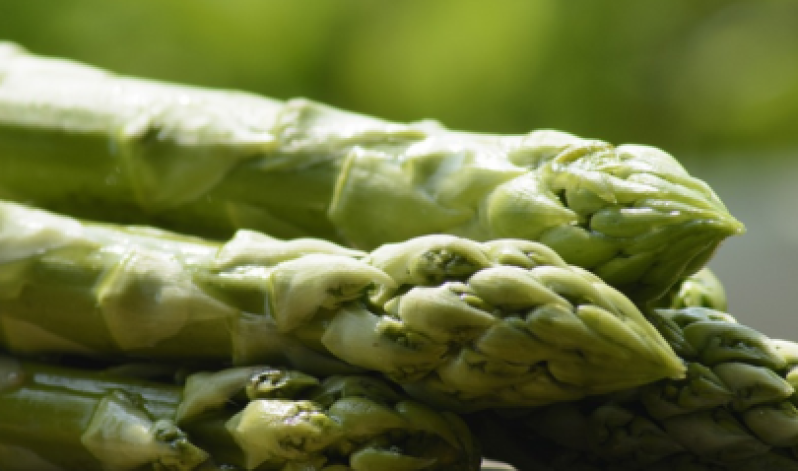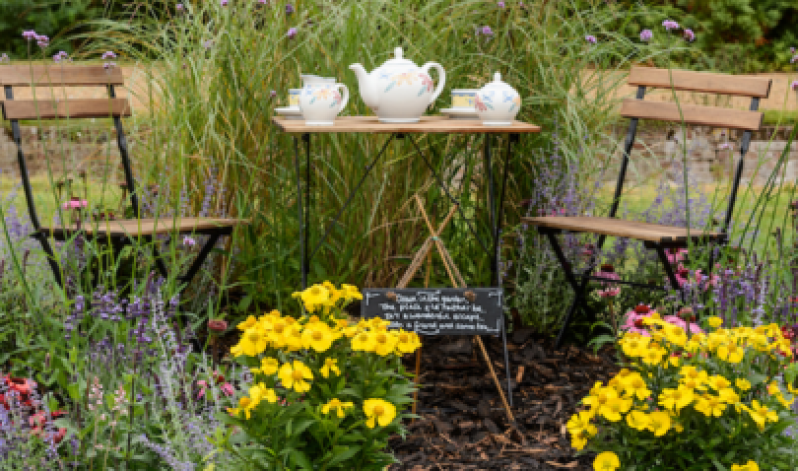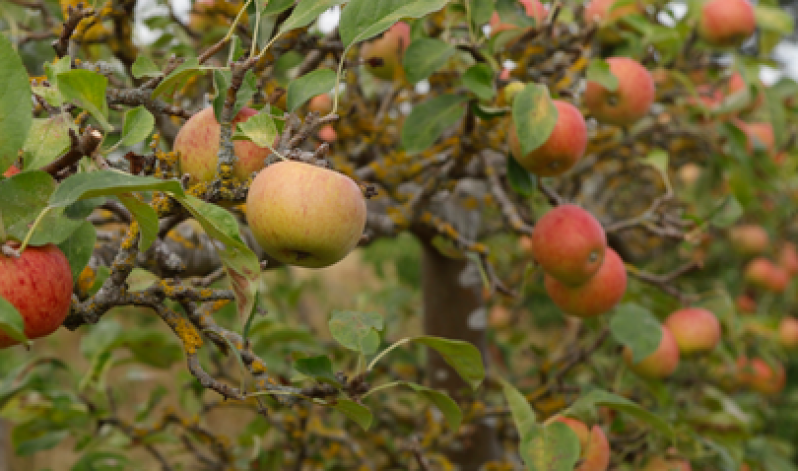Oct 27, 2023
0 comment
How to care for birds in your garden this winter
The Woodland Trust, who you may have seen at our BBC Gardeners’ World Events earlier this year, have put together some top tips to care for birds in your garden this winter. Read on below to find out more!
Winter can be a difficult time for wildlife. Temperatures plummet and food becomes difficult to find. Insect-eating birds turn to alternative foods, some species travel far and wide, and foraging behaviour adapts, but we can lend a helping hand by providing a welcome source of extra food for birds to turn to in leaner times. Different birds are attracted to certain foods, often reflecting their special adaptations for natural food types. Offer a variety of tempting morsels to maximise your bird table’s wow factor.
Where to feed birdsIt’s not only the types of food that tickle particular birds’ fancies, but also where they’re fed. You may have noticed that dunnocks and wrens shy away from bird tables and hanging feeders.Sprinkle crumbled fat balls and seed beneath shrubs for secretive and ground feeding birds. Smear fat mixtures into the cracks and crevices of branches or bark for treecreepers, nuthatches and woodpeckers. And don’t forget to clear feeders and feeding areas of snow after fresh falls as smaller birds can struggle to get through it.
/*! elementor - v3.19.0 - 07-02-2024 */
.elementor-widget-image{text-align:center}.elementor-widget-image a{display:inline-block}.elementor-widget-image a img[src$=".svg"]{width:48px}.elementor-widget-image img{vertical-align:middle;display:inline-block}
Waxwing
Planting for birds One of the most satisfying and hassle-free ways to feed birds in winter is to plan ahead and let nature provide. Rowan produces a lasting crop of berries that in bumper years can see birds through for several months. They’re a favourite of mistle thrushes which will guard them jealously from other hungry visitors. Ivy is also a good plant to encourage, its late-ripening berries offering food through the colder months and its evergreen leaves provide the perfect larder for wrens to search out hibernating insects.
Redwing
Keep it upOnce you start feeding birds, try to keep regular in your topping up habits. While most visitors will adapt and move to new feeding grounds when natural food gradually runs out, a sudden drop off in feeding puts them on the hop. In winter when alternative food sources are already scarce, this could mean the difference between life and death for some.Woodland Trust woods support wild birds year round with food and shelter in their natural environment so even if you don’t have your own outdoor space you can be there for your favourite winter visitors by standing up for trees with the Woodland Trust. To find out more about our work and get involved, click the button below:
Blackbird
FIND OUT MORE ABOUT WOODLAND TRUST
With thanks to
/*! elementor - v3.19.0 - 07-02-2024 */
.elementor-widget-divider{--divider-border-style:none;--divider-border-width:1px;--divider-color:#0c0d0e;--divider-icon-size:20px;--divider-element-spacing:10px;--divider-pattern-height:24px;--divider-pattern-size:20px;--divider-pattern-url:none;--divider-pattern-repeat:repeat-x}.elementor-widget-divider .elementor-divider{display:flex}.elementor-widget-divider .elementor-divider__text{font-size:15px;line-height:1;max-width:95%}.elementor-widget-divider .elementor-divider__element{margin:0 var(--divider-element-spacing);flex-shrink:0}.elementor-widget-divider .elementor-icon{font-size:var(--divider-icon-size)}.elementor-widget-divider .elementor-divider-separator{display:flex;margin:0;direction:ltr}.elementor-widget-divider--view-line_icon .elementor-divider-separator,.elementor-widget-divider--view-line_text .elementor-divider-separator{align-items:center}.elementor-widget-divider--view-line_icon .elementor-divider-separator:after,.elementor-widget-divider--view-line_icon .elementor-divider-separator:before,.elementor-widget-divider--view-line_text .elementor-divider-separator:after,.elementor-widget-divider--view-line_text .elementor-divider-separator:before{display:block;content:"";border-block-end:0;flex-grow:1;border-block-start:var(--divider-border-width) var(--divider-border-style) var(--divider-color)}.elementor-widget-divider--element-align-left .elementor-divider .elementor-divider-separator>.elementor-divider__svg:first-of-type{flex-grow:0;flex-shrink:100}.elementor-widget-divider--element-align-left .elementor-divider-separator:before{content:none}.elementor-widget-divider--element-align-left .elementor-divider__element{margin-left:0}.elementor-widget-divider--element-align-right .elementor-divider .elementor-divider-separator>.elementor-divider__svg:last-of-type{flex-grow:0;flex-shrink:100}.elementor-widget-divider--element-align-right .elementor-divider-separator:after{content:none}.elementor-widget-divider--element-align-right .elementor-divider__element{margin-right:0}.elementor-widget-divider--element-align-start .elementor-divider .elementor-divider-separator>.elementor-divider__svg:first-of-type{flex-grow:0;flex-shrink:100}.elementor-widget-divider--element-align-start .elementor-divider-separator:before{content:none}.elementor-widget-divider--element-align-start .elementor-divider__element{margin-inline-start:0}.elementor-widget-divider--element-align-end .elementor-divider .elementor-divider-separator>.elementor-divider__svg:last-of-type{flex-grow:0;flex-shrink:100}.elementor-widget-divider--element-align-end .elementor-divider-separator:after{content:none}.elementor-widget-divider--element-align-end .elementor-divider__element{margin-inline-end:0}.elementor-widget-divider:not(.elementor-widget-divider--view-line_text):not(.elementor-widget-divider--view-line_icon) .elementor-divider-separator{border-block-start:var(--divider-border-width) var(--divider-border-style) var(--divider-color)}.elementor-widget-divider--separator-type-pattern{--divider-border-style:none}.elementor-widget-divider--separator-type-pattern.elementor-widget-divider--view-line .elementor-divider-separator,.elementor-widget-divider--separator-type-pattern:not(.elementor-widget-divider--view-line) .elementor-divider-separator:after,.elementor-widget-divider--separator-type-pattern:not(.elementor-widget-divider--view-line) .elementor-divider-separator:before,.elementor-widget-divider--separator-type-pattern:not([class*=elementor-widget-divider--view]) .elementor-divider-separator{width:100%;min-height:var(--divider-pattern-height);-webkit-mask-size:var(--divider-pattern-size) 100%;mask-size:var(--divider-pattern-size) 100%;-webkit-mask-repeat:var(--divider-pattern-repeat);mask-repeat:var(--divider-pattern-repeat);background-color:var(--divider-color);-webkit-mask-image:var(--divider-pattern-url);mask-image:var(--divider-pattern-url)}.elementor-widget-divider--no-spacing{--divider-pattern-size:auto}.elementor-widget-divider--bg-round{--divider-pattern-repeat:round}.rtl .elementor-widget-divider .elementor-divider__text{direction:rtl}.e-con-inner>.elementor-widget-divider,.e-con>.elementor-widget-divider{width:var(--container-widget-width,100%);--flex-grow:var(--container-widget-flex-grow)}
See what happened at BBC Gardeners' World Autumn Fair in 2023
Applications for Beautiful Borders are now open - find out more





